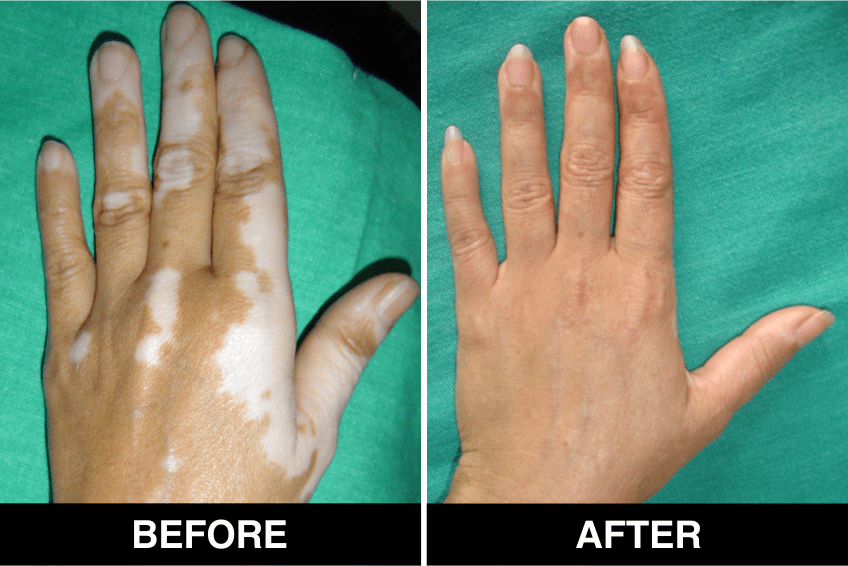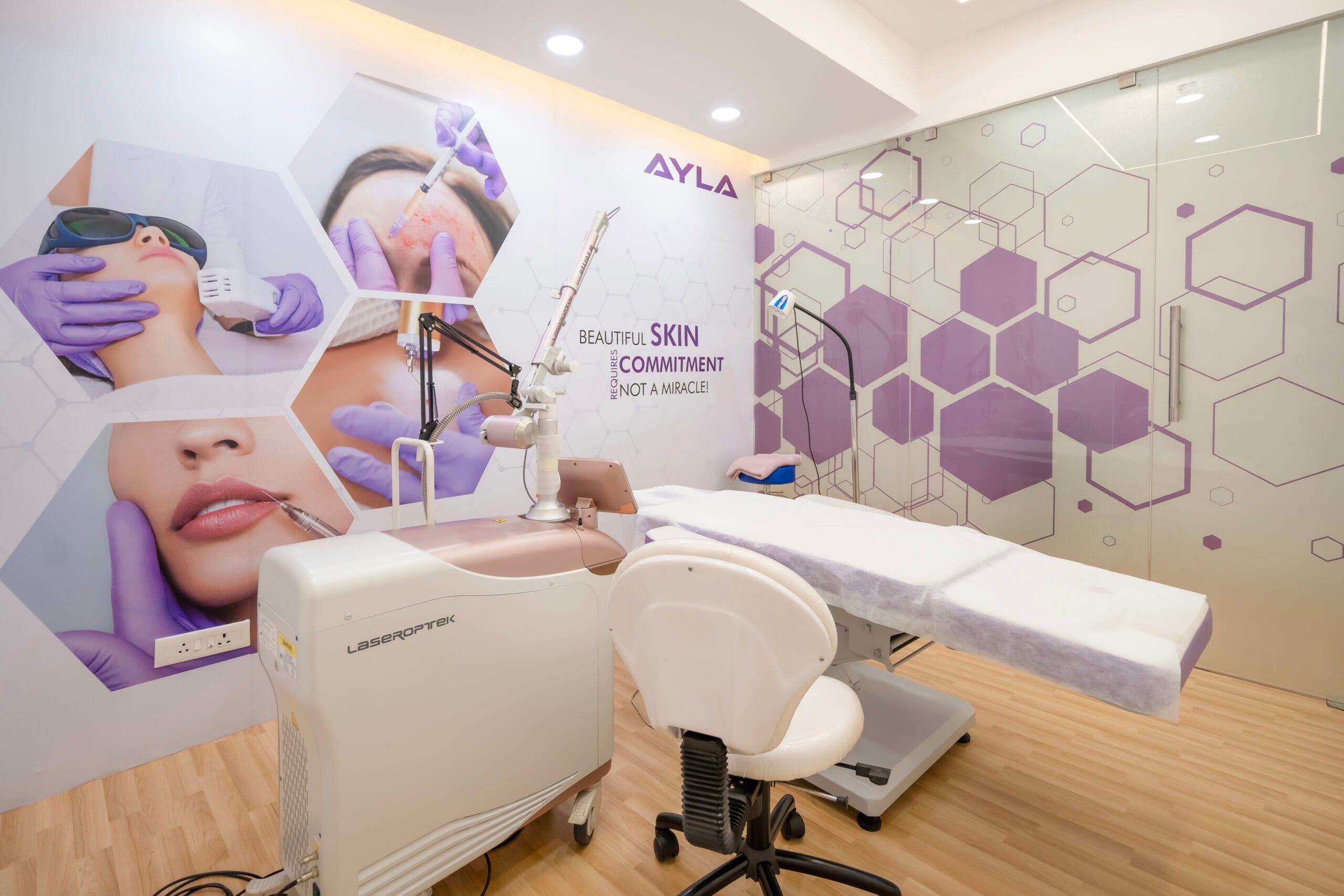Vitiligo Surgery Treatment
Transform Your Skin at Ayla Skin and Hair Clinic, Vizag
Considering Vitiligo Surgery?
Vitiligo is a chronic skin condition marked by the loss of pigmentation, leading to the development of white patches on the skin. It commonly affects the face, hands, and other visible areas, often causing emotional distress and reduced self-confidence.
While topical creams and light therapies can help in some cases, they may not always provide satisfactory results. For patients seeking a more permanent solution, surgical options offer a chance to restore natural skin color and improve appearance.
- Visible white patches that may lower self-esteem and confidence.
- Progressive depigmentation if not properly treated.
- Limited effectiveness of conventional creams and therapies in stubborn cases.
- Desire for long-lasting restoration of natural skin tone.
Vitiligo surgery offers hope for patients who have not responded to standard treatments, helping restore pigmentation and confidence.
Visible White Patches
Emotional Distress
Progressive Depigmentation
Need for Permanent Solution

Advanced Vitiligo Surgery Treatment Solution
At Ayla Skin and Hair Clinic, we provide advanced vitiligo surgery for patients seeking permanent pigmentation restoration.
Surgical Options Include:

Our dermatologists carefully assess the type, size, and location of your vitiligo patches and design a personalized surgical plan to restore pigmentation, improve skin appearance, and enhance your confidence with long-lasting results.
What Our Patients Say
Real results from real patients in Vizag
"After vitiligo surgery at Ayla, my skin tone looks natural. I feel confident again!"
"Professional care and precise surgery. The white patches are gone, and my self-esteem is back."
"Ayla Skin Clinic is the best for vitiligo surgery in Vizag. The doctors are highly skilled and supportive."
"Excellent results and post-surgery guidance. My vitiligo patches have been successfully treated."
Before & After Gallery
See the transformation results

Why Choose Ayla Skin and Hair Clinic?
At Ayla, we don't just treat your skin — we restore your confidence.
Expert Dermatologists
Certified and experienced skin specialists in Vizag
Advanced Technology
US-FDA approved peels for safe results
Customized Approach
Treatment tailored to your skin's needs
Comfort & Care
Minimal downtime and aftercare guidance


Book Your Vitiligo Surgery Treatment Appointment Today
Book Your Appointment
Complete the form below to schedule your appointment
🎉 Thank You!
Your details have been submitted.
Our team will contact you
shortly.
Frequently Asked Questions
Get answers to your Vitiligo Surgery treatment questions
1. Is vitiligo surgery painful ? +
Local anesthesia ensures minimal discomfort, making the procedure virtually painless.
2. How long does it take to see results after surgery ? +
Pigmentation improvement is usually noticeable within 4–12 weeks, depending on the technique and area treated.
3. Can vitiligo surgery be performed on all body areas ? +
Yes. The surgical method is selected based on patch size, location, and skin type for optimal results.
4. Are the results permanent ? +
Yes, surgical restoration of pigmentation is permanent, though regular monitoring may be recommended.
5. Is there any downtime after vitiligo surgery ? +
Minimal downtime is required. Patients are advised to avoid sun exposure and follow post-surgical care to ensure proper healing.
